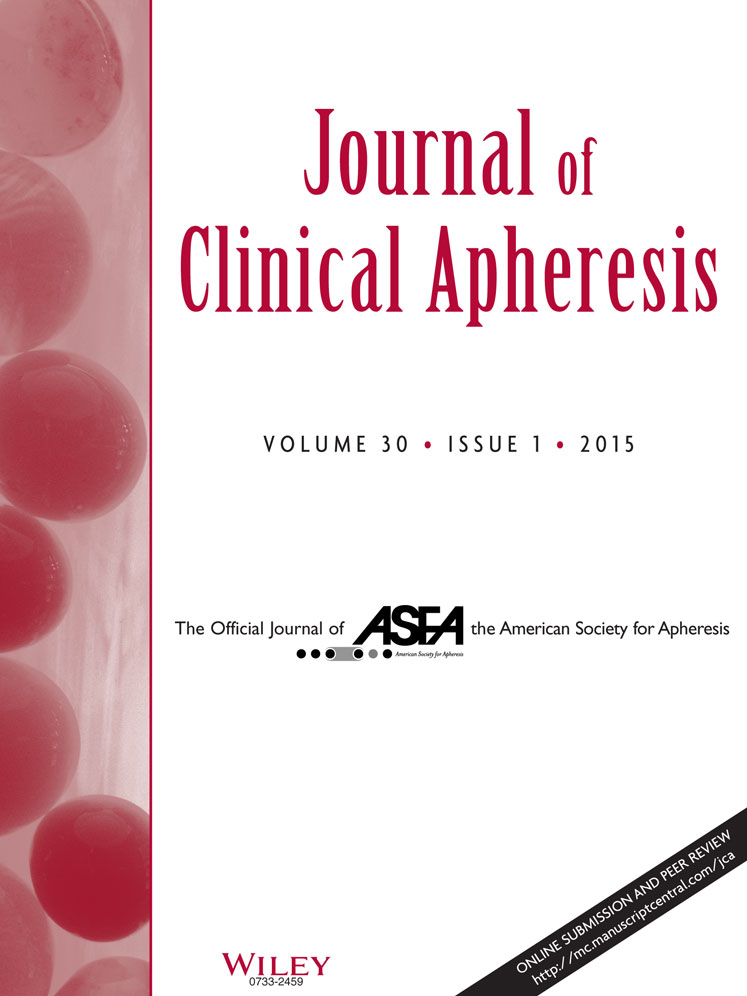Evaluation of the spectra Optia® mononuclear cell collection procedure in multiple myeloma patients
This article was published online on 18 June 2014. An error was subsequently identified. This notice is included in the online and print versions to indicate that both have been corrected 26 June 2014.
Conflict of Interest: Jerry Bill and Susanne Marschner are employed by Terumo BCT. No other authors have a conflict of interest to declare.
Abstract
Background: Peripheral blood stem cell (PBSC) rescue following myeloablative therapy is a mainstay of cancer therapy. To evaluate the ability of the Spectra Optia Apheresis System (SO), a newly developed apheresis device, the device was studied in multiple myeloma patients undergoing a first autologous PBSC transplant. Aim: To demonstrate that neutrophil recovery was not inferior to historical controls when SO harvested PBSCs were reinfused following myeloablative therapy. Methods: Multiple myeloma patients were mobilized according to the standard practice at four clinical sites. Following mobilization, MNC collections were performed on the SO. The collected cells were cryopreserved and reinfused following myeloablative chemotherapy. Neutrophil recovery defined by an absolute neutrophil count exceeding 500/μL (ANC500) was compared to historical data for patients transplanted following apheresis using the COBE Spectra (CS) device. Results: The median day to neutrophil recovery was 12 days (range 10–14 days), with no significant difference in engraftment comparing patients transplanted with stem cells collected using the SO versus historical cohort of patients collected with the CS. CD34+ cell and MNC collection efficiency (CE) were 69.3% and 65.0% for the SO and CS, respectively. Platelet CE, product hematocrit and product granulocytes (as % of WBCs) using the SO were 21%, 2.3% and 28%, respectively. There were no device-related severe adverse events. Conclusions: The study's results confirm that the Spectra Optia Apheresis System's MNC Collection Protocol is safe and effective for its intended use and that engraftment kinetics of cells collected by SO is not inferior to the CS System. J. Clin. Apheresis 30:1–7, 2015. © 2014 Wiley Periodicals, Inc.




